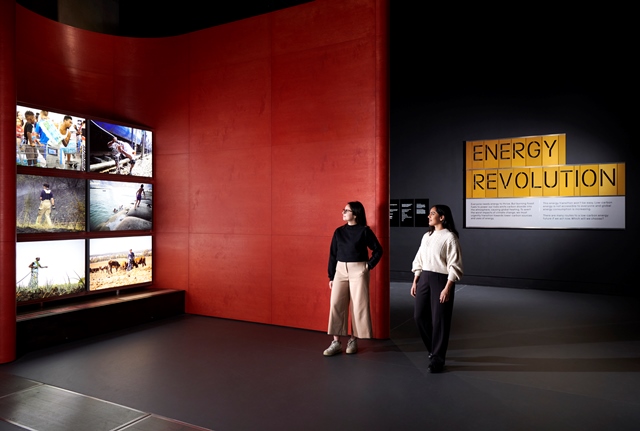The Science Museum in London has opened a gallery exploring the energy transition and decarbonization needed globally to limit climate change, with the European Marine Energy Centre (EMEC) working in collaboration with the institution over the past three years to showcase the marine energy and green hydrogen projects and technologies in Orkney in northern Scotland.
Energy transition gallery
The free Energy Revolution: The Adani Green Energy Gallery “examines this century’s defining challenge through the lens of imagination” across three sections. Future Planet enables visitors to examine how climate scientists use mathematics and complex computer-based models to understand our planet, and what these tell us about the range of climate futures that might lie ahead. Future Energy explores technologies – and the people behind them – that are reimagining how energy is supplied and used today, alongside historic artifacts which provide a longer view of the energy transition away from fossil fuels. Our Future looks forward to a new world that is being dreamed up, with children’s creative ideas of how the world will meet its future energy needs displayed with expert responses to them.
Looking at the past, present and future of energy systems, Energy Revolution: The Adani Green Energy Gallery features recognizable objects plus interactive exhibits to highlight how to journey to a more sustainable world – and achieve a low carbon future. The gallery highlights technologies and projects from the UK and abroad – from tidal energy and hydrogen power in Orkney to terracotta air-cooling façades in India and solar farms in Morocco.
Orkney
Visitors can see a model demonstrating renewable energy and hydrogen on the islands, spanning floating offshore wind and tidal turbines to EMEC’s green hydrogen production plant. EMEC managing director Neil Kermode, operations technician Jerry Gibson and corporate affairs director Eileen Linklater also feature in a new film featuring the people and places behind these pioneering projects.
Guests to the museum can also view the winning commission from 2024’s Sky Arts Landscape Artist of the Year. “Orkney and the Energy Within”, by artist Monica Popham, was inspired by Orkney and its role in the UK’s transition to low-carbon and renewable energy. Popham was challenged to add to the Science Museum Group’s Collection depicting science and technological innovation through art. She visited Orkney in 2023 for inspiration to capture the islands’ history of innovation within the wild landscape and powerful resources that place it at the forefront of the renewables revolution.
One of the attractions is a 7m-long tidal turbine blade made by Orbital Marine Power. Used on the SR-2000, a 63m-long, 500-ton tidal turbine deployed at EMEC’s test site from 2016-18, this prototype blade helped generate enough electricity to power a thousand homes through harnessing the strong tidal flows around Orkney. A second blade from the SR-2000 can be viewed at the Orkney Research and Innovation Campus in Stromness for those in Orkney unable to visit the gallery.
Linklater said, “It’s brilliant to see the pioneering role Orkney has played in the energy transition recognized in this way, and it was a huge honor to be at the launch. A large section of the new gallery is dedicated to Orkney as a case study for future energy innovation, but it was also fantastic to see a hooded Orkney chair featured as an example of past energy innovation – keeping heat in and drafts out. With the Science Museum welcoming more than three million visitors a year from all over the world, we hope they can learn something from our energy experience.”
In related news, the UK government has awarded £33m (US$41m) in funding to 33 projects across the UK to deliver demonstrations, factory trials and feasibility studies for green technologies for ports and ships. Click here to read the full story.



